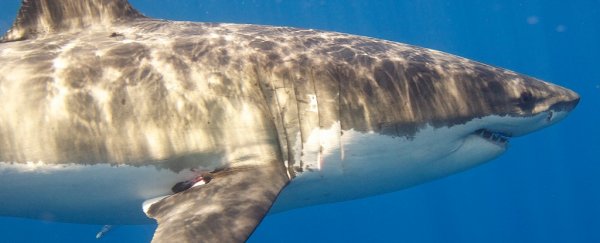If you were to jump up right now and head to your local zoo or aquarium, you'd likely find quite a couple of shark species living – for the most part – pretty well in captivity, but you'd be hard pressed to find a great white, despite the fact that they are one of the most talked about species around.
That isn't to say that zoos haven't tried time and time again to house great whites within their aquarium walls. In fact, every time a great white has been on display, crowds have flocked to see them in record numbers.
The bad part is that most of these sharks die within a few days or weeks, making them one of the hardest species to keep in captivity, but why?
Well, to answer that, we turn to the folks at Vox who just released a new video exploring the subject.
Basically, there are two main reasons great whites aren't kept in captivity: it takes an insane amount of resources for the aquarium to pull; and – most importantly – the sharks die quickly outside of the oceans no matter what zookeepers do. To better understand this, let's walk through an extremely brief rundown of great whites in captivity.
According to the video, before 2004, the longest a great white had survived inside an aquarium was a mere 16 days, despite numerous institutions trying their hand at keeping them alive.
One possible explanation for this was offered up by researchers at Steinhart Aquarium in the US who said: "In most cases, it could be said that all these captive sharks were merely in the process of dying, with some taking longer than others."
In other words, the sharks arrived at the aquariums already injured and failed to regain their health. These injuries likely occurred during transit or when the sharks were pulled from the ocean (a task that's just as hard as it sounds).
In 2004, though, the Monterey Bay Aquarium proved that there was a way to keep great whites alive for about 6 months in captivity using a 1 million gallon (3,785,411 litre) tank that was 35 feet (10 metres) deep and designed specifically for open water creatures.
Despite this massive tank, the Monterey Bay team still had to use a small great white that measured only a little over 4 feet (1.2 metres) – tiny compared to the great white's full size of 15 feet (4.5 metres) – so it had enough room to swim. It was also handy, because at that size great whites still feed on fish instead of mammals, making them easier to care for.
When all was said and done, the aquarium successfully held the shark in captivity for about 6 months before returning it to the ocean after it killed some of its tank mates.
This is the longest anyone has ever kept a great white in captivity, and it likely won't happen again anytime soon because – despite the moderate success – sharks still have a really, really stressful time in captivity, even if everything is going right.
As the video explains, great whites, unlike many other shark species that are kept in aquariums, are not used to hanging around one area for long. Instead, they prefer open water where they can swim long distances whenever they want.
When a shark is taken from this environment and placed in a tank – even a big one – they constantly run into the glass, scraping away at their noses and sides until something – whether it's injury or just stress – kills them.
Maybe in the future scientists will devise a way to keep these amazing animals in captivity so the public can see them up close, but the real question is: should we try, or just leave them be?
Check out the video above to find out more.
